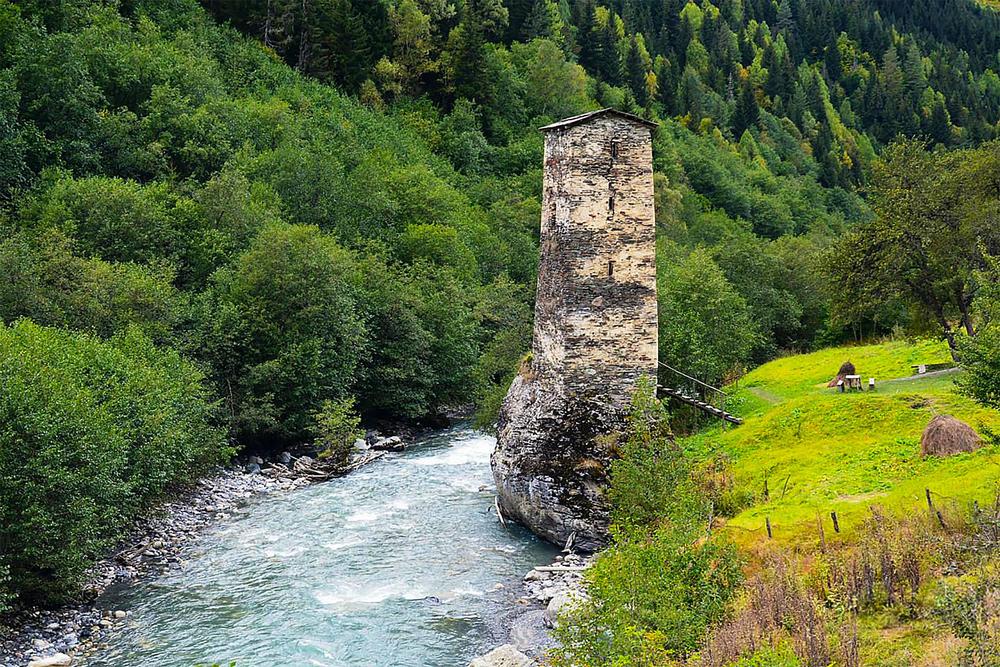Secluded amidst the mountains in Mestia Municipality, south of the Chkhutneri Range, lies the Monastery of St. Kvirike and St. Ivlita of Kala. The monastery, known as Lagurka in Svan, stands at an elevation varying around 1870 meters or approximately 6135 feet above sea level. Established in the 10th century, this religious site carries a rich history as a monastic complex in the Middle Ages.
The church within the monastery is of the hall type, a testament to the architectural preferences of its time. Its walls serve as a canvas to history, adorned with murals painted in 1112 by King Theodore. This renowned monarch had earlier left his artistic mark in Svaneti, on the Church of the Archangel in Ipari in 1096.
Today, the monastery stands as a treasure trove of religious art. The collection preserved at St. Kvirike and St. Ivlita is a significant representation of 10th to 13th-century artistry, featuring medieval engraved and painted icons. Among these sacred artifacts is an enamel-decorated icon referred to by the Svans as the "Shaliani icon".
At a mere kilometer's journey from the monastery, the 12th-century church of St. Kvirike reveals itself. Nestled on a mountaintop above the quaint village of Kala, this church comes to life annually on July 28th, marking the festival of Kvirikoba. The event commemorates the martyrdom of two early Svan Christians and is a vibrant spectacle of local culture and tradition.
An intriguing legend associated with this celebration speaks of love and sorrow. It narrates the tale of star-crossed lovers and their tragic fate that led to the creation of the "Tower of Love". This narrative adds a profound depth to the cultural significance of this place and paints a vivid picture of its medieval past.
The Monastery of St. Kvirike and St. Ivlita of Kala is not just a religious site. It is a symbol of the area's rich past and cultural heritage, inviting visitors to step back in time and immerse themselves in its history.












